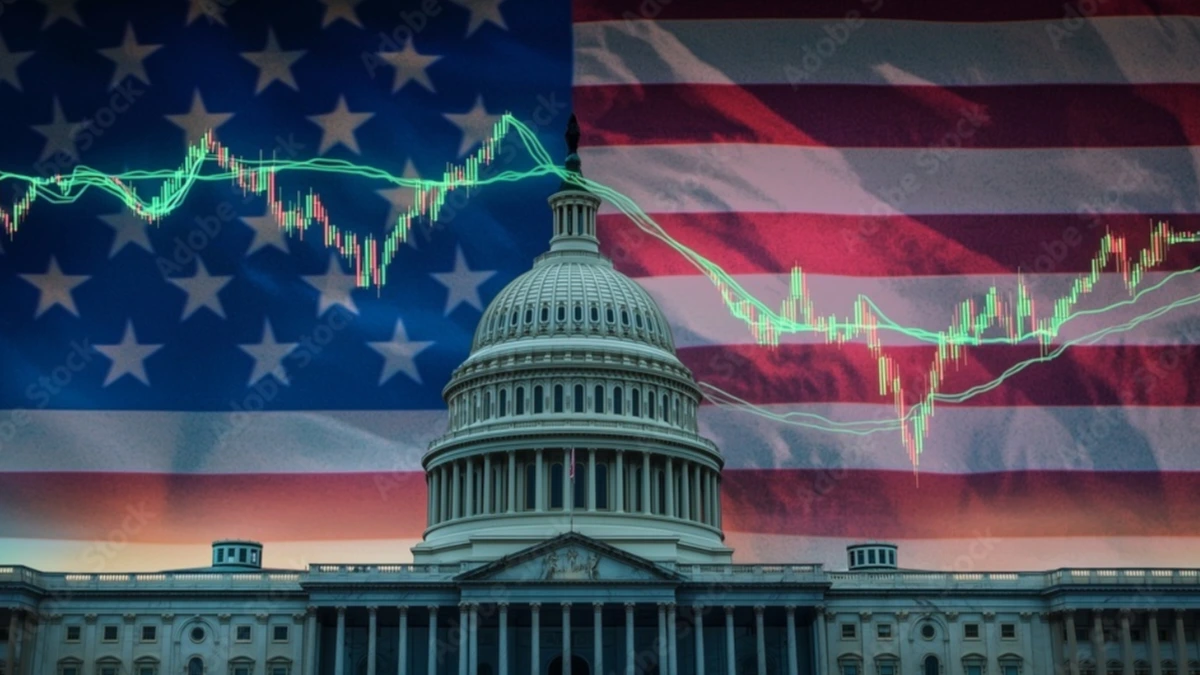WASHINGTON (TECHY QUANTUM) — The United States government’s gross national debt has climbed beyond $38 trillion, marking a historic milestone and the fastest trillion dollar increase ever recorded outside of the pandemic era.
The figure, published in the Treasury Department’s latest report this week, comes just two months after the national debt reached $37 trillion in August.
The record was set as the federal government faced a partial shutdown, highlighting deep divisions over spending priorities and economic management.
Analysts warn the rapid pace of debt accumulation could have long lasting consequences for the economy, from higher inflation to greater borrowing costs for American households.
The US national debt has ballooned at an extraordinary pace in recent years. It stood at $34 trillion in January 2024, rose to $35 trillion by July, and reached $36 trillion by November of that same year.
Economists note that such growth once took decades now it happens in a matter of months. Much of this increase reflects pandemic related stimulus spending, persistent budget deficits, and growing interest payments.
Federal outlays on entitlement programs, defense, and interest obligations have continued to outpace government revenues despite stronger post pandemic tax receipts.
The Congressional Budget Office has repeatedly warned that, under current fiscal policies, federal debt will exceed the size of the entire US economy within the next decade. Fiscal experts are increasingly voicing concern over the country’s financial trajectory.
Kent Smetters, director of the Penn Wharton Budget Model, said the trend is “deeply unsustainable,” adding that “rising debt eventually fuels higher inflation and weakens the purchasing power of everyday Americans.”
He noted that higher interest payments on the debt compete with private investment and limit the government’s ability to respond to future crises. “As inflation compounds, future generations will find it harder to afford homes, education, and basic financial security,” he said.
Michael Peterson, chief executive of the Peter G. Peterson Foundation, called the $38 trillion threshold “a wake up call” for policymakers.
“We spent about $4 trillion on interest payments over the last decade,” he said. “In the next ten years, that number is expected to triple to $14 trillion. Those dollars are effectively crowding out investments in infrastructure, innovation, and education.”
Economists generally agree that high debt does not immediately cause economic collapse but persistent deficits can erode investor confidence, increase the cost of government borrowing, and ultimately pressure inflation upward.
According to Treasury data, the national debt has grown by roughly $69,700 per second over the past year. Of the total, about $30 trillion is held by the public, while $8 trillion consists of intragovernmental holdings such as federal trust funds.
Interest costs are now the fastest growing category of federal spending, surpassing defense outlays in some months of 2025. The average interest rate on marketable debt instruments has climbed above 3.4 percent, more than double the rate recorded in 2021.
Comparatively, the US debt to GDP ratio has surged to around 123 percent a level not seen since the aftermath of World War II. By contrast, it hovered near 60 percent in the early 2000s.
For many Americans, the abstract figure of $38 trillion translates into tangible anxieties about affordability and opportunity.
In Columbus, Ohio, small business owner James Hughes, who manages a metal fabrication shop, said rising borrowing costs are already affecting local employers.
“We used to finance new machinery at low rates,” he said. “Now the banks are charging nearly twice as much. That limits how much we can grow or hire.”
In Phoenix, Arizona, 34 year old teacher Sarah Martinez said she fears what mounting debt means for her children.
“When the government spends more than it earns, that debt doesn’t vanish it becomes our responsibility,” she said. “If inflation keeps eating into wages, owning a home will be out of reach for most young families.”
The White House maintains that its policies are reducing the federal deficit. Treasury Secretary Scott Bessent said in a recent post that the deficit from April to September stood at $468 billion, the lowest level since 2019.
A White House spokesperson added that “President Trump has cut the deficit by $350 billion compared with the same period in 2024 by reducing spending and increasing revenue.”
Still, independent analysts caution that short term improvements may not offset the long term fiscal imbalance. With entitlement obligations, higher interest rates, and a slowing global economy, many economists expect the US to add several trillion dollars more in debt before the decade ends.
“Without bipartisan reforms to taxes and spending, we’re on track for an era where interest costs dominate the federal budget,” said Laura Chen, a fiscal policy expert at the Brookings Institution. “That means fewer resources for everything from infrastructure to national security.”
As the US debt surpasses $38 trillion, the milestone underscores the growing strain on the nation’s fiscal health. Rising interest costs, persistent deficits, and the compounding effects of inflation pose serious challenges to future economic stability.
While Washington debates the path forward, the pace of borrowing shows no sign of slowing leaving economists, policymakers, and ordinary citizens grappling with the same urgent question how long can America sustain its ever expanding debt burden?

